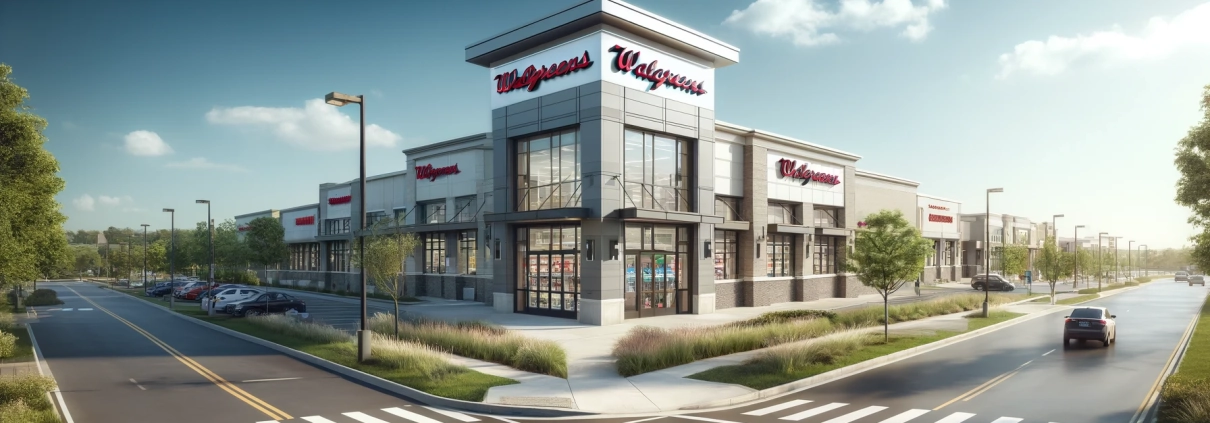Zero Cash Flow Property
A real estate investment where all excess cash flow from a property goes to pay down the senior mortgage. Zero cash flow investments are generally leased to credit-rated, single-tenant NNN tenants, and the loan is sized/crafted such that the debt service equals the lease payments and the loan term and amortization match the lease term.
Much of the benefit of owning this type of property comes in the losses, due to depreciation, over the hold period that offset gains on other investments in an investor’s portfolio. Modeling the taxable losses is essential to understanding the yield of such an investment.
Putting ‘Zero Cash Flow Investment’ in Context
Consider a scenario involving a Walgreens investment situated on a prominent street corner in a suburban neighborhood. This Walgreens store operates under an absolute triple-net (NNN) lease, where the tenant is responsible for all operating and capital expenses, leaving the landlord with minimal responsibilities.
- Location: Suburban neighborhood, high-visibility corner lot
- Property Type: Freestanding retail pharmacy
- Lease Type: Triple-net (NNN)
- Tenant: Walgreens, a credit-rated, national pharmacy chain
- Building Size: 14,500 square feet
- Land Area: 2.0 acres
Financial Structuring:
- Purchase Price: $5,000,000
- Loan Amount: $5,000,000 (sized to match the purchase price)
- Interest Rate: 5.5%
- Loan Term: 30 years (to align with an extended amortization period)
- Annual Rent: Approximately $340,673 (structured to closely match the annual debt service)
In this zero cash flow investment scenario, the rent paid by Walgreens now closely matches the new annual debt service on the loan. The cash flow from the property effectively nets to zero after debt service, meaning there is no excess cash flow distributed to the investor annually. The investor’s primary financial benefit from this arrangement derives from the depreciation of the property, which generates significant taxable losses. These losses are particularly valuable as they can be used to offset taxable gains from other investments within the investor’s portfolio.
Modeling Taxable Losses:
- Initial Property Depreciation: Assuming a 39-year straight-line depreciation for commercial property, the annual depreciation expense would be approximately $128,205.
- Tax Impact: If the investor is in a 37% tax bracket, these depreciation deductions could reduce their taxable income by approximately $47,436 annually, serving as a tax shield.
This model illustrates how a zero cash flow investment like a Walgreens property can serve as a strategic tool for managing investment portfolio tax implications, rather than providing direct income through cash flow.
Frequently Asked Questions about Zero Cash Flow Property Investments
What is a Zero Cash Flow Property?
A zero cash flow property is a real estate investment where all excess cash flow goes toward paying the senior mortgage. Typically, the rent payments match the debt service exactly, leaving no distributable cash flow for the owner.
Why invest in a Zero Cash Flow Property?
The main benefit lies in the tax losses generated from depreciation. These losses can be used to offset gains in other parts of an investor’s portfolio, making them attractive for tax planning purposes.
What kind of tenants are typical in Zero Cash Flow Investments?
They are generally leased to credit-rated, single-tenant, NNN (triple-net) tenants such as Walgreens, where the tenant covers all operating and capital expenses.
How are loans structured in Zero Cash Flow deals?
Loans are sized so that the debt service matches the lease payments exactly, and the loan term and amortization schedule match the lease duration to ensure consistent cash neutrality.
How does depreciation affect the tax outcome?
Depreciation creates taxable losses even when there is no cash flow. For example, with $128,205 in annual depreciation and a 37% tax bracket, an investor could reduce taxable income by approximately $47,436 per year.
Is there any cash flow to the investor?
No. All rent payments go directly to servicing the debt, leaving zero cash flow for the investor during the hold period.
What’s an example of a Zero Cash Flow scenario?
A Walgreens property purchased for $5M with a $5M loan at 5.5% interest, where rent (~$340,673/year) matches debt service. The investor benefits from depreciation, not cash flow.
Click here to get this CRE Glossary in an eBook (PDF) format.

